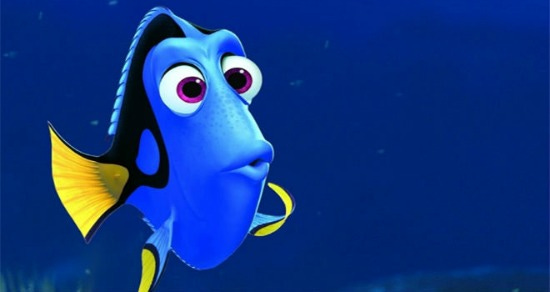Finding Dory

Of course it doesn’t hold a candle to “Finding Nemo,” but that’s a pretty darn bright flame to be held up against. We’re talking “best animated film ever” territory here.
“Finding Dory” isn’t that, but it is an agreeable and welcome follow-up to the 2003 hit from Disney / Pixar. Even more than the first “Toy Story” flicks, “Nemo” showed us the boundless possibilities of computer-based animation, in terms of technical accomplishment but especially emotional engagement.
Ellen DeGeneres brought incredible empathy to her voice performance as Dory, a forgetful blue tang who befriends worrywart clownfish Marlin while searching for his fishnapped son, Nemo. A story about reaching out beyond our limits while learning to let go of fears — and children’s apron strings — “Nemo” took us on an emotional journey as real as the cross-ocean trek of our gilled companions.
Now it’s Dory’s turn to go on a trip of discovery. Struggling with short-term memory loss her entire life, so she forgets new experiences minute by minute, she suddenly has dim flashbacks of her parents, and sets out to find them — with her orange-and-white pals in tow, it goes without saying.
Albert Brooks is, of course, back as the voice of nebbishy Marlin, who’s grown a lot in the year since the last story took place, though he’s still overly protective of Nemo. (Hayden Rolence takes over the role of the tyke since original actor Alexander Gould is a twentysomething now.)
This movie, again written and directed by Andrew Stanton, focuses less on the trip than the destination: the (fictional) Marine Life Institute on the California coast. A sort of sea-life utopia with a dark undertow, it’s a place where injured fish are snatched up from the ocean, rehabilitated and returned to the sea — unless they’re needed for an aquarium in Cleveland, that is.
The human workers are rather blasé about how they treat the critters, and some of the fishies have acquired off-kilter personalities during their confinement, such as a lonely giant oyster who’ll talk your ears (if you have them) off. Sigourney Weaver provides the soothing voice of the tourist park’s narrator, lulling us into a false sense of benevolence.
Among the new characters are Destiny (Kaitlin Olson), a nearsighted whale shark; Bailey (Ty Burrell), a beluga whale convinced his echolocation ability is on the fritz; and Fluke and Rudder (Idris Elba, Dominic West), a pair of lackadaisical sea lions and former residents of the marine institute who now serve as a sort of territorial Greek chorus.
Undoubtedly the film’s finest creation is Hank, a cantankerous octopus voiced by Ed O’Neill. A longtime captive of the marine center, Hank agrees to help Dory find her parents in return for a one-way ticket to a quiet life in a glass box. He can change his color and contort his slippery body to camouflage himself against virtually any object — not to mention manipulate human tools with hilarious aplomb.
The movie’s a little too overly reliant on slapsticky action to carry the plot forward. I lost count of the number of times Dory & Co. jumped or were dunked from one body of water to another, from a sippy cup to child’s sand pail to a janitor’s mop bucket, without ill effects. You just have to roll with it.
(A former aquarium hobbyist, my brain kept screaming: “But those sudden changes in temperature, pH level and salinity would be deadly!”)
Despite the fact it’s nowhere near as accomplished as its predecessor, I wasn’t disappointed by “Finding Dory.” The second trip is rarely as exciting as the original excursion, but you can ride the current of warm feelings from the last time.
It felt nice to be back in good company, going on another adventure with the gang. Speaking of which: Make sure to stay all the way through the credits.



